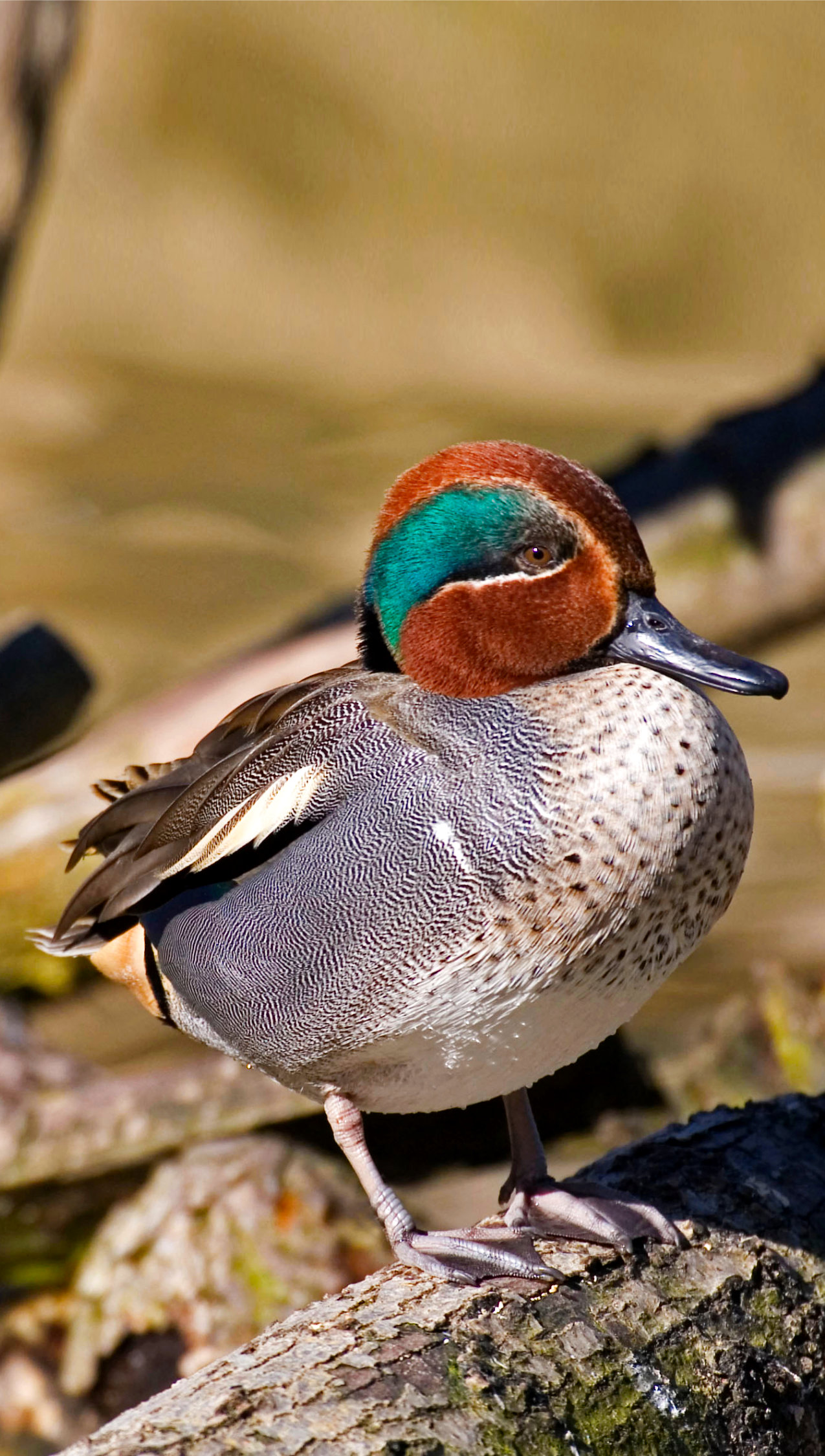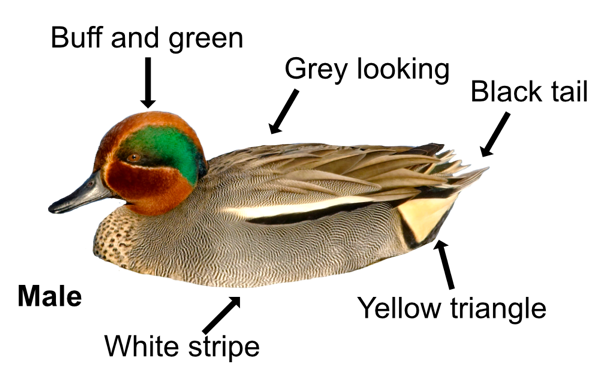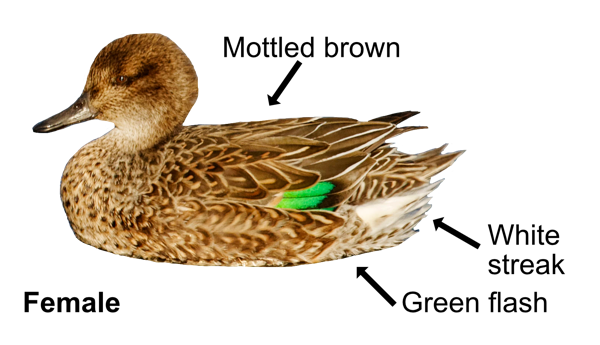
The male Teal is a snazzy bird with a harlequin head. It is our smallest duck and is easy to spot in winter on reservoirs, gravel pits, and flooded meadows. Numbers increase in winter as more birds arrive from Iceland, the Baltic and Siberia, and the UK becomes home to a significant percentage of the northwest European Teal population. Collectively, a group of Teal is known as a 'spring' because of the way this very agile duck can take off suddenly and vertically as if they have jumped straight off the ground!

The male has a buff and green patched head, a white stripe along a grey-looking body and a mustard yellow triangle on his black tail. The bill and legs are black. The female is a mottled brown with a white streak near the tail. Both have a bright green speculum. In flight, the Teal can resemble a wader with its twisting, turning and rapid flapping flight. Their call is a high-pitched peeping "crree".
They feed mainly at night, eating a wide variety of food that is found mostly in shallow water like pondweed, rushes, water snails, and water beetles. They also eat seeds, buttercups, grasses and worms.

Teals pair up during winter and stay together for the breeding season. Nesting begins in April and the nest is a hollow lined with grass, leaves and down, built in dense vegetation close to the water's edge on wet moorland bogs or marshes. Dad deserts mum as soon as she lays the 8-11 eggs which hatch after 21 days. He goes off to join other males where they do their moult into eclipse plumage and are flightless for four weeks. Dad won't see the kids again until they reach their winter quarters. Once hatched, the young chicks can feed themselves while mum looks after them. They become fully independent 30 days later. Outside the breeding season, Teals are highly gregarious ducks and can form large flocks. By the following year, the young Teals can breed themselves.
Only about 2,000 Teals breed here, mainly in Scotland. Numbers swell to 220,000 between October and March, with birds arriving from Iceland and northern Europe. Teal numbers have declined since the 1970s. This is thought to be due to forests being planted on their traditional breeding grounds. The oldest ringed Teal lived to be 25 years old, which is ancient for such a small bird.
Their Latin name is 'anas crecca' where 'anas' is Latin for 'duck' and 'crecca' is derived from 'kricka' the Swedish name for a Teal which refers to the male's "crree" call. Similar onomatopoeic names are found in Danish 'krikand' and German 'kirckente'. The Teal gives its name to the blue-green colour 'teal'.